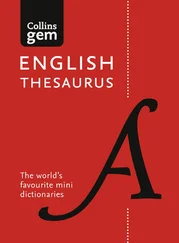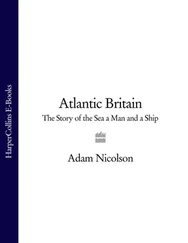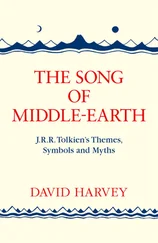ο absence of divergence between the new performance model and the speech community’s linguistic behaviour, positive language attitudes towards the variety
ο authoritative codification sets in and the variety is officially recognised, it consequently shifts away from Kachru’s expanding circle to the outer circle
Based on the criteria catalogue succinctly presented above, Mollin carried out an empirical study to evaluate the variety status of Euro-English. Her guiding research question was whether Euro-English has its own independent form. To be more specific, her project set out to investigate if Euro-English exhibits common lexico-grammatical and morpho-syntactic features from various L1 languages to qualify as a novel nativised variety. She used a 400,000-word large corpus of Euro-English (2006, p. 93). It included a spoken component in the form of public discussions and public speeches, broadly representative of EU speech patterns of politicians, officials, and journalists from different countries. The written component consisted of spontaneous online writing, e. g. discussion groups and chat rooms with EU politicians and ordinary citizens.
For her research, Mollin suggested variables that might mark off Euro-English from the two major varieties, e. g. in terms of lexis: ‘actual’ for ‘current’, ‘eventual’ for ‘possible’, the semantic conflation of ‘possibility’ and ‘opportunity’. With respect to morpho-syntax, for example, she investigated the omission of the third person singular -s, plural marker -s with uncountable nouns, interchangeability of the relative pronouns ‘who’ and ‘which’, complementation, question tags, do-support, etc. (2006, pp. 103 ff.). Mollin’s research outcome revealed that her respondents’ specific uses of some individual cases are closely related to their deficiency in English rather than to their deliberate choice. From the author’s standpoint, her findings are therefore not indicators of a nativised variety but “an amalgam of idiosyncratic learner Englishes” and hence not typical features “that transcend individual speakers and individual cases” (2006, p. 155).
To implement her research project, Mollin administered her questionnaire via e-mail and the survey population was made up of academics such as university lecturers from 21 countries. First, participants were submitted to an acceptability test with typical Euro-English structures adapted from Murray 12, in which they were asked to decide if the suggested structures were in their view correct or not. In case of mistakes, participants had to provide a correct alternative. Another part of the questionnaire targeted Mollin’s informants’ general beliefs and attitudes towards English. They had to state their agreement or disagreement on a scale of five items that ranged from ‘strongly agree’ to ‘strongly disagree’. The results supported the claim that Europeans are not in favour of a developing endo-normative standard, i. e. the norms are no longer taken over from BrE or AmE. In this connection, the author mentioned that “the option that is most interesting to us, namely Euro-English, was chosen by only 5,4 % of respondents” (2006, p. 174). She infers that “speaking like the other non-native Europeans do is thus obviously not appealing to the sampled academics” (2006, p. 174). The English her respondents are trying to approximate is rather ‘International English’ 13, with 30.9 % of them doing so and 37.5 % using BrE, which is clearly ahead of AmE with 12.9 %. Regarding the legitimacy of the label Euro-English, Mollin asserts on the basis of her statistical outcome that “we cannot describe Euro-English as an institutionalized variety”. She further concludes that the endorsement of “non-native patterns of English is clearly related to mother tongue and competence in English, but not to the support for Euro-English” (2006, p. 195). Hence, English remains a foreign language in the European context. Thus, it would be more appropriate to utilise the label ‘register’ for Europeans’ speech patterns, referring to a specific function rather than a specific group. In actual fact, it can be observed that ELF features within Europe strongly rely both on specific situations speakers have to linguistically cope with as well as their communication purposes. Furthermore, the nature of interactions among non-native speakers of English proves to be as diverse as the speakers’ English proficiency and there is still paucity of ELF linguistic evidence, so that the label ‘variety’ cannot be given credit (Gnutzmann & Intemann, 2008, p. 17).
With regard to assessing the type of English spoken in educational settings, it would be also revealing to replicate Mollin’s study, but with upper secondary and university students, as they represent an important section of European societies. Their primary contact code is English as well, which especially holds true for mobility programmes like Erasmus. Referring back to Mollin’s study, it could therefore also be argued that her sampling of middle-aged university lecturers may call into question their representativeness of attitudes to and perceptions of Euro-English. Further research is needed here.
2.6.2.3 Standard Language Ideology
As discussed above, Mollin takes a stance on Euro-English from a deficit linguistic perspective by not recognising English as having functional lingua franca status. Nonetheless, within the framework of standard language ideologies in EFL teaching, the view of some scholars markedly contrasts Mollin’s. They believe that the increased use of English and widespread exposure to it in Europe will result in the emergence of a variety or varieties. Still, there are somewhat different opinions on whether a putative new form of English qualifies as endo-normative, viz. a locally grown variety, or as exonormative, viz. reliance on mostly BrE norms.
Modiano (as cited in Berns, 1995, p. 7) has Kachruvian linguistics as his theoretical sociolinguistic point of departure and in his work refers to the label “Euro-English”, the alleged ‘variety’ spoken by mainland Europeans. He posits that Europeans mix the two main varieties and no longer attempt to speak BrE exclusively. In his view, ‘Euro-English’ resultant from the conflation of BrE and AmE, viz. ‘MAE’ will evolve into a second-language variety for mainland Europe. His postulate refers to empirical studies of the difference and convergence of BrE and AmE in the Swedish EFL context that he carried out himself together with some of his colleagues (cf. Modiano, 2002). Modiano further argues that the culture-specific features of the L 2 users’ languages in Europe will ultimately be codified. Hence, ‘Euro-English’ addresses the novel sociolinguistic profile, which has built up within the EU 14: English operates as the primary lingua franca. Modiano envisages two stages regarding the emergence of this new alleged European ‘variety’. The first stage can be defined as a transitional one. It is ‘MAE’, marked by the amalgam of the two main varieties in the speech of Europeans, and the second is the emergence of ‘Euro-English’, which, like ‘MAE’, has the potential for promoting better cross-cultural communication (Modiano, 2009, p. 62). Modiano also stresses that he perceives no general difference between outer-circle second languages on the one hand and the EFL usage in Europe on the other. According to him, they ought to be on an equal footing with respect to their ‘variety’ status.
However, Seidlhofer and Jenkins do not appear to be inclined towards a conceptualisation of English within the Kachruvian paradigm. On the contrary, they express vehement opposition to a native speaker point of reference by promoting a gradual departure from Inner Circle norms and targeting the establishment of endo-normative English standards (Jenkins, 2000, pp. 233–235; Seidlhofer, 2017). Yet, it might be objected that their understanding of how English is meant to function as a lingua franca is extremely controversial for EFL settings because its structural lingua franca features have not matured yet.
Читать дальше












